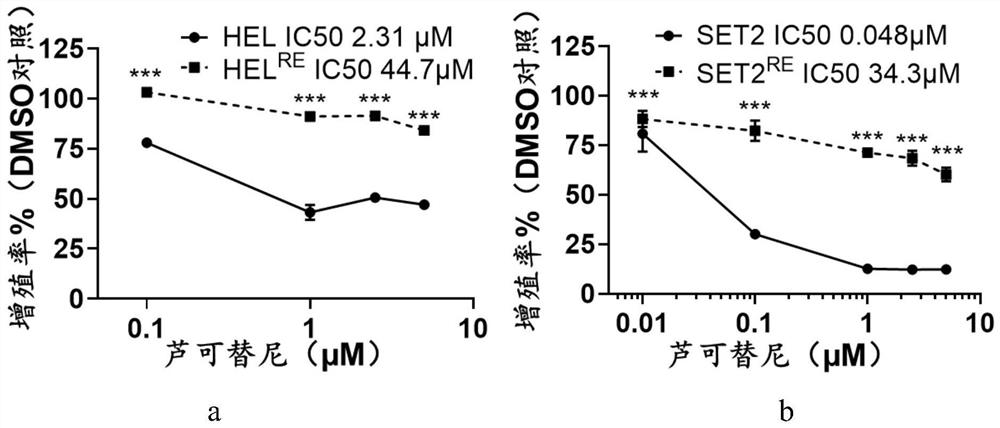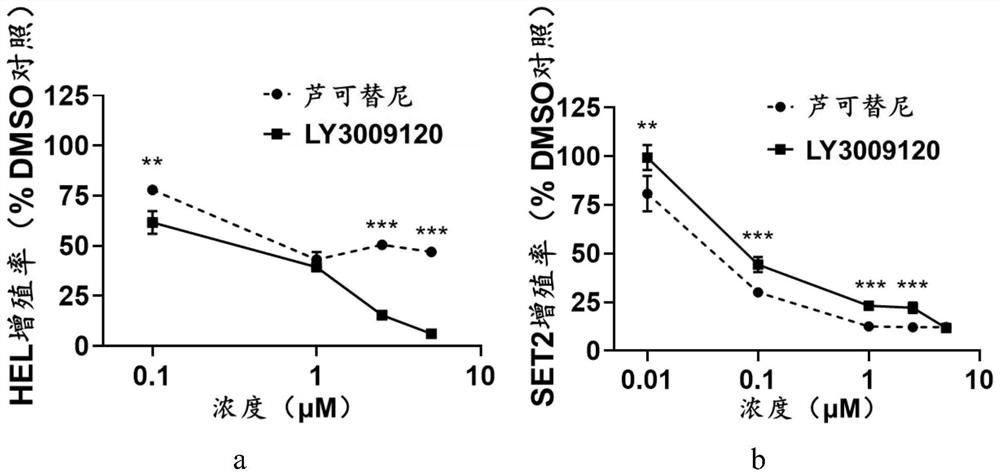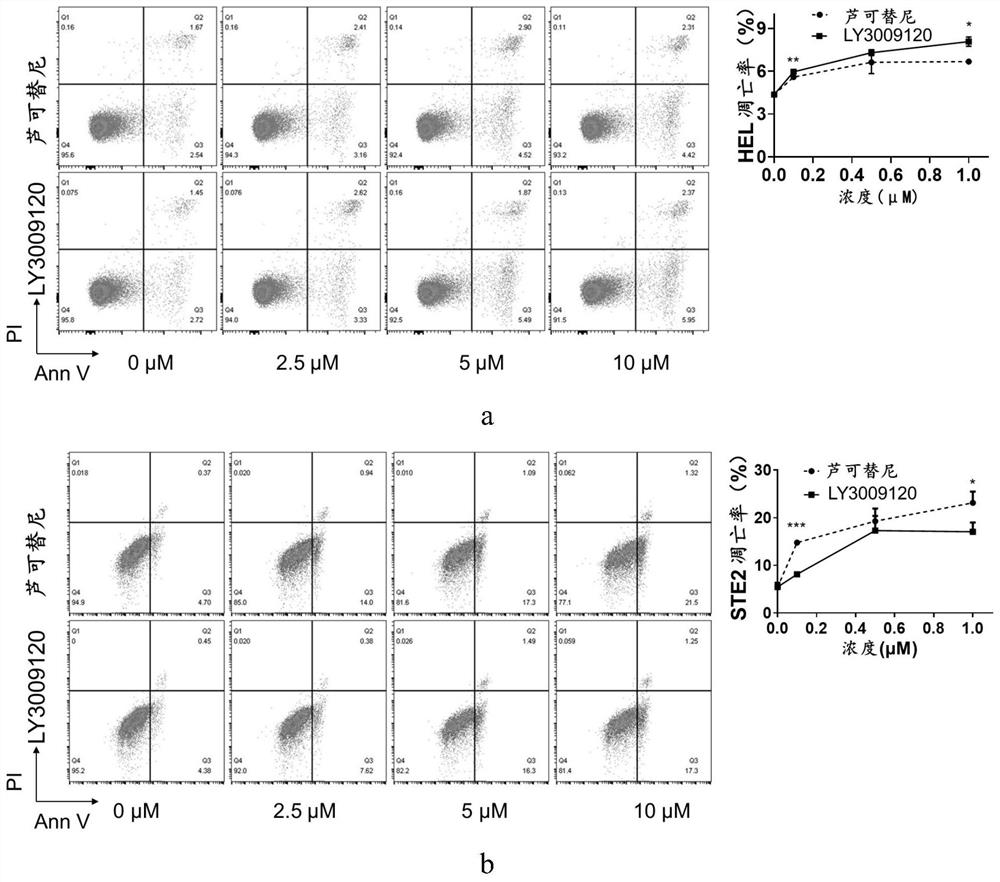Application of LY3009120 in preparation of medicine for treating myeloproliferative tumors
A bone marrow proliferation and drug technology, applied in the field of medicine, can solve the problems of narrow scope, inability to fundamentally treat myeloproliferative tumors, high cost of bone marrow transplantation, etc., and achieve the effect of low cost and good clinical application prospects
- Summary
- Abstract
- Description
- Claims
- Application Information
AI Technical Summary
Problems solved by technology
Method used
Image
Examples
Embodiment 1
[0047] Embodiment 1, the establishment of two common ruxolitinib drug-resistant cell models (HEL RE , SET2 RE ).
[0048] 1. Materials and methods
[0049] 1. Cell line
[0050] HEL (Human erythroleukemia cell line), ruxolitinib-resistant HEL cells, SET2 cells and ruxolitinib-resistant SET2 cells were all cultured in 20% heat-inactivated fetal bovine serum (Gibco) and 1% penicillin / Streptomycin in RPMI medium (Gibco).
[0051] HEL model of ruxolitinib resistance RE The model was constructed by starting to add ruxolitinib at a concentration lower than the IC50 of the original cells, and slowly increasing to a high concentration to maintain the cells from being killed. Our initial concentration was 0.1 μM, and the drug was added as soon as the cells proliferated, and the drug addition gradient was 1.25 times increasing, and the final concentration was 2.0 μM. Stable drug-resistant cells were obtained after 4-6 weeks. Another ruxolitinib resistance model is SET2 RE That ...
Embodiment 2
[0060] Example 2, LY3009120 can inhibit the proliferation of myeloproliferative tumor cells
[0061] In order to detect the effect of LY3009120 on the proliferation of drug-resistant cells in myeloproliferative neoplasms, the method was to use increasing concentrations of ruxolitinib and LY3009120 to treat HEL primitive cell lines and SET2 primitive cell lines respectively, and use CellTiter-Lumi TM Luminescence method is used to detect the proliferation of cells, the method is the same as in Example 1, and the results are shown in figure 2 .
[0062] figure 2 a reflects that in HEL cells, the ruxolitinib treatment group drug concentration (average proliferation rate % ± standard deviation) is: 0 μ M (100 ± 2.40) (not shown in the figure), 0.1 μ M (77.9 ± 2.43), 1 μ M ( 43.2±3.75), 2.5μM (50.6±2.19), 5μM (47.0±1.15); LY3009120 treatment group drug concentration (average proliferation rate) was: 0μM (100±7.65) (not shown in the figure), 0.1μM (61.7± 5.66), 1 μM (39.5±1.39)...
Embodiment 3
[0063]Example 3, LY3009120 can promote the apoptosis of myeloproliferative tumor cells
[0064] 1. Materials and methods
[0065] 1. Cell lines and inhibitors are the same as in Example 1.
[0066] 2. Apoptosis detection
[0067] In order to detect the pro-apoptotic effect of inhibitors, ruxolitinib and LY3009120 were used to treat HEL primitive cell lines and SET2 primitive cell lines for 24 hours (concentration: 0, 0.1, 0.5, 1 μM), and supplemented with DMSO to the same amount. Three parallel repeat groups were set up, and the apoptosis of cells was detected by flow cytometry after AnnexinV and PI staining.
[0068] Apoptosis rate calculation formula: cell apoptosis rate = early apoptotic cell ratio (AnnexinV + / PI - )+ ratio of late apoptotic cells and necrotic cells (AnnexinV + / PI + ).
[0069] 2. Results Analysis
[0070] image 3 In a, the drug concentration (average apoptosis rate%±standard deviation) of the HEL cell ruxolitinib treatment group was: 0 μM (4.37...
PUM
 Login to View More
Login to View More Abstract
Description
Claims
Application Information
 Login to View More
Login to View More - R&D
- Intellectual Property
- Life Sciences
- Materials
- Tech Scout
- Unparalleled Data Quality
- Higher Quality Content
- 60% Fewer Hallucinations
Browse by: Latest US Patents, China's latest patents, Technical Efficacy Thesaurus, Application Domain, Technology Topic, Popular Technical Reports.
© 2025 PatSnap. All rights reserved.Legal|Privacy policy|Modern Slavery Act Transparency Statement|Sitemap|About US| Contact US: help@patsnap.com



